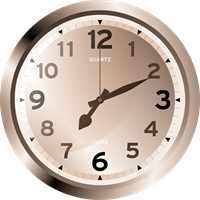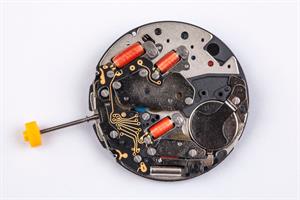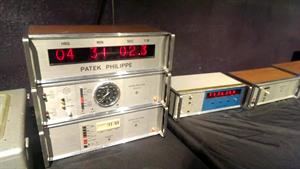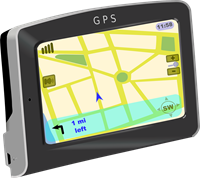
PUMPA - SMART LEARNING
எங்கள் ஆசிரியர்களுடன் 1-ஆன்-1 ஆலோசனை நேரத்தைப் பெறுங்கள். டாப்பர் ஆவதற்கு நாங்கள் பயிற்சி அளிப்போம்
Book Free DemoClocks based on work mechanism
There are two different types of clocks, namely,
- Quartz clock
- Atomic clock
Quartz clock
Electronic oscillations, which are regulated by a quartz crystal (silicon dioxide), are used to activate these clocks. The frequency of a vibrating crystal is extremely accurate. As a result, quartz clocks are more precise than mechanical clocks. The precision of these clocks is one second in every seconds.

Quartz clocks, consisting of an electric circuit with one or more cells, gives more accurate time than any other clocks. The inside view of the quartz clock is shown in the picture.

Important!
The first quartz clock was built in 1927 by Warren Marrison and J.W. Horton at Bell Telephone Laboratories.
Atomic clock
The periodic vibrations that occur within the atom are used in these clocks. The precision of these clocks is one second in every seconds.

Uses
- Atomic clocks are used in the navigation systems such as GPS Device (Global Positioning System), GLONASS (Global Navigation Satellite System).
- They are also used by International Time Distribution Services.

Important!
National Institute of Standards and Technology (U.S.A) has created the most accurate clock in the world, which lose or gain one second after 20\ million\ years.
Greenwich Mean Time
Greenwich Mean Time (GMT) refers to the average or the mean solar time at the Royal Observatory in Greenwich, London. It is measured at a longitude of zero degrees.
Greenwich Mean Time (GMT) refers to the average or the mean solar time at the Royal Observatory in Greenwich, London. It is measured at a longitude of zero degrees.

Our Earth is divided into 24 zones, each having a 15-degree longitude width. These areas are referred as Time Zones. There is a one-hour difference in time between two nearby time zones.
Indian Standard Time
Mirzapur in Uttar Pradesh is taken as reference point of longitude for Indian Standard Time (IST). It lies at a longitude of 82.5\ degrees.
Mirzapur in Uttar Pradesh is taken as reference point of longitude for Indian Standard Time (IST). It lies at a longitude of 82.5\ degrees.

Reference:
https://upload.wikimedia.org/wikipedia/commons/0/04/Patek_Philippe_%26_Hewlett_Packard_Atomic_Clock_%28circa_1960s%29_-_Geneva_time._%EF%BC%83NOLA_-_M.S._Rau_Antiques_%28taken_on_2015-03-26_21.11.11_by_%40DrGarcia%29.jpg
https://cdn.pixabay.com/photo/2014/04/02/10/53/gps-304842_1280.png
https://cdn.pixabay.com/photo/2013/07/12/16/33/clock-hands-151141_1280.png
https://upload.wikimedia.org/wikipedia/commons/1/1b/Greenwich_clock.jpg
https://upload.wikimedia.org/wikipedia/commons/5/57/IST-Mirzapur.svg